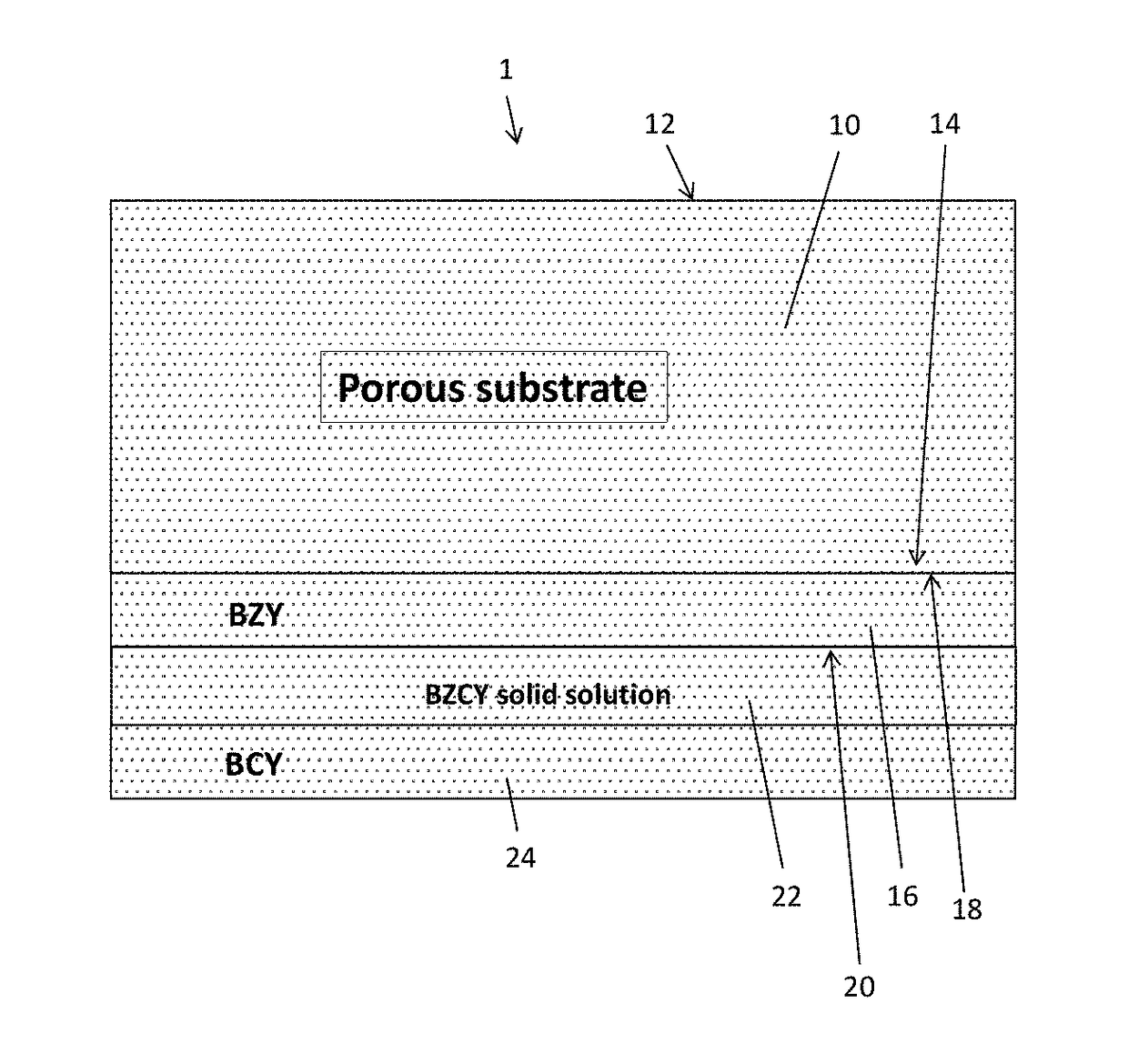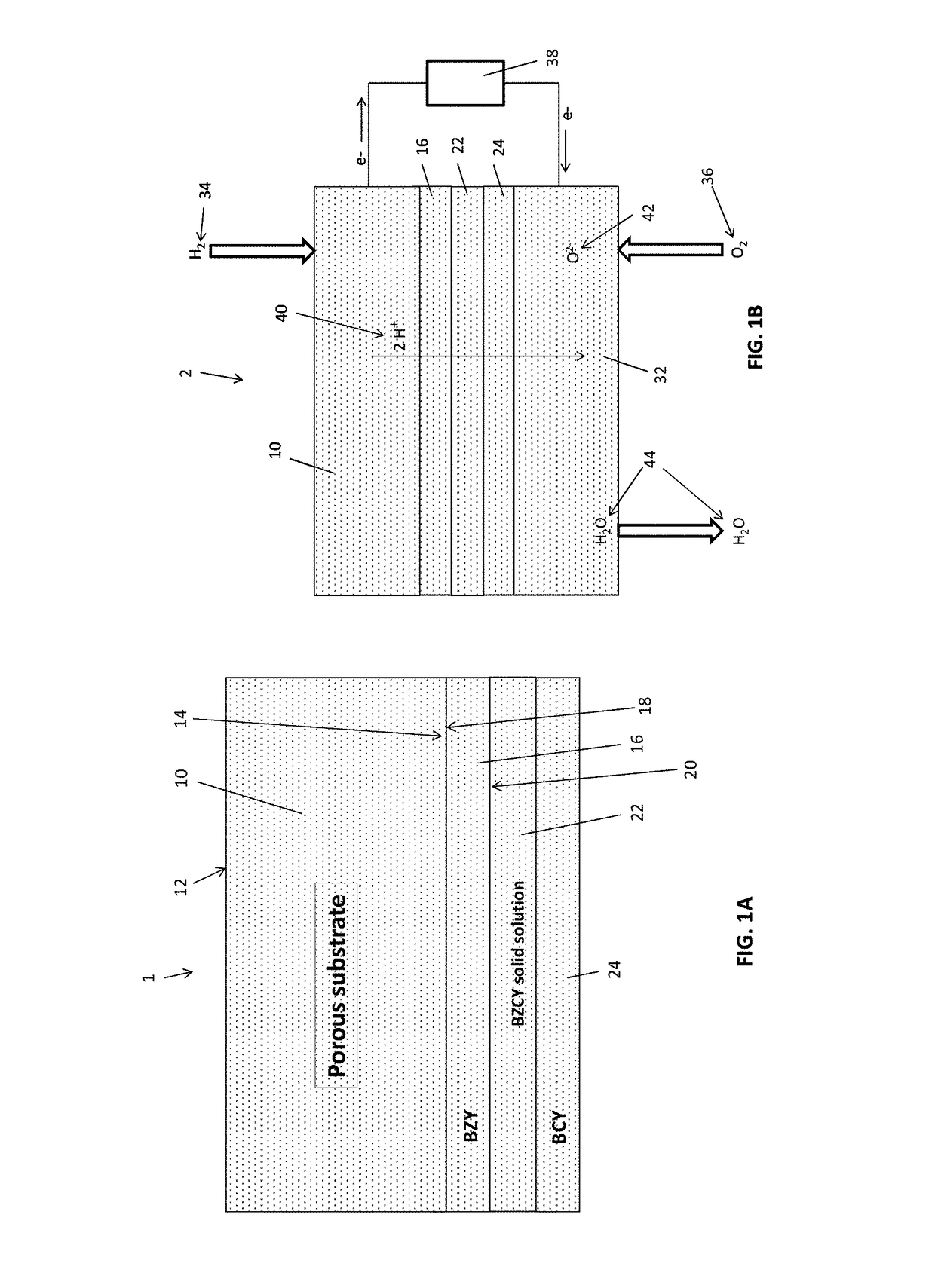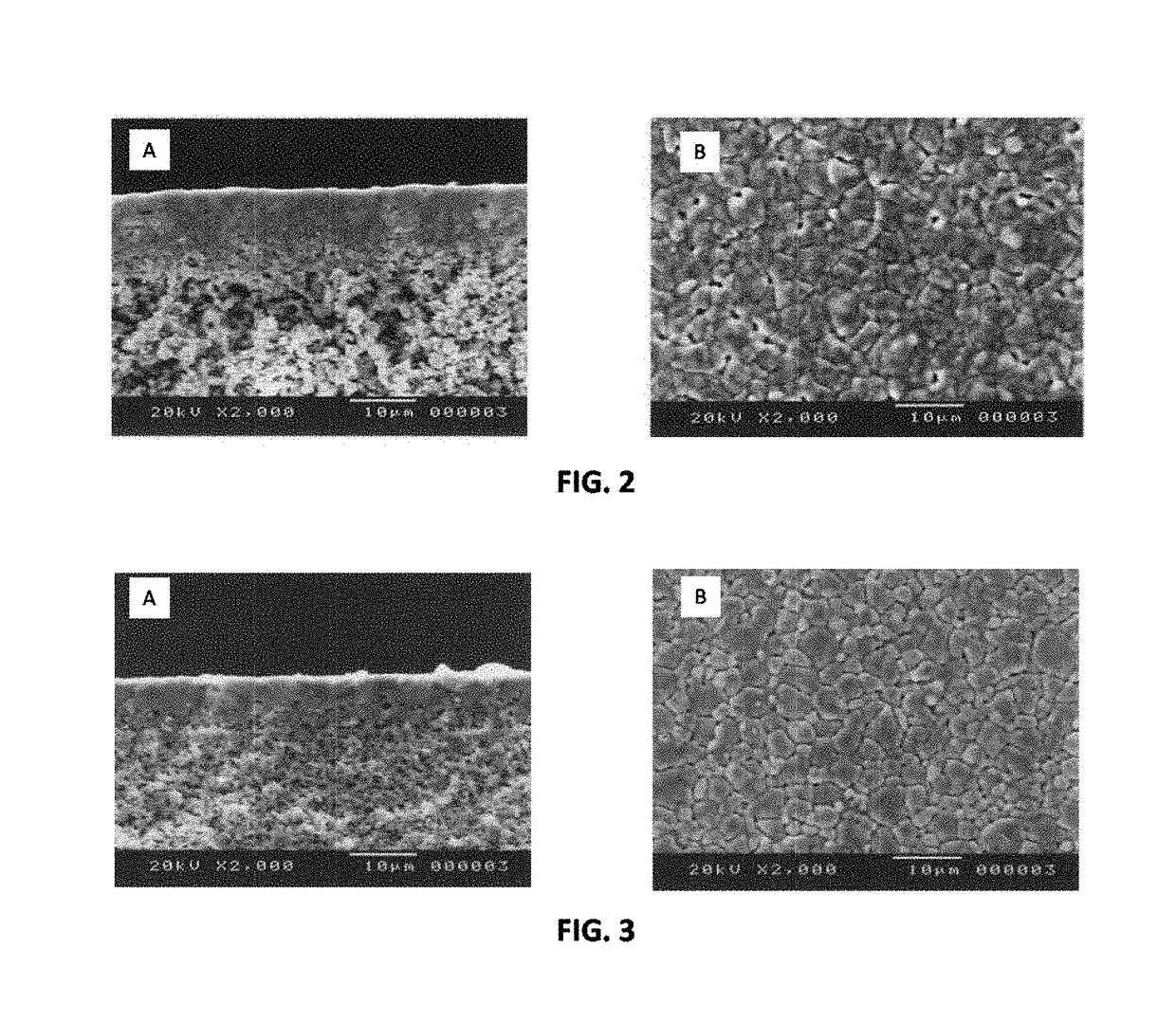Multi-layered proton-conducting electrolyte
a proton-conducting electrolyte, multi-layer technology, applied in the manufacture of final products, cell components, electrochemical generators, etc., can solve the problems of promoting deleterious chemical reactions between bzy and its electrodes, difficult sintering of bzy to high densities, and high grain boundary resistivity, so as to achieve good chemical stability, high proton conductivity, and favorable transport properties
- Summary
- Abstract
- Description
- Claims
- Application Information
AI Technical Summary
Benefits of technology
Problems solved by technology
Method used
Image
Examples
example 1
hesis
[0055]Powders of BaZr0.8Y0.2Ox (BZY) and BaCe0.8Y0.2Ox (BCY) were purchased from Praxair Specialty Ceramics. A powder of BaZr0.7Pr0.1Y0.2Ox (BZPY) was prepared by combustion synthesis from a mixture of barium nitrate, zirconium nitrate, praseodymium nitrate, and yttrium nitrate at about 800° C. in air using glycine as a fuel. The phase purity of the BZPY powder was checked by x-ray diffraction. BZY and BCY can also be made using the combustion synthesis technique.
example 2
bstrate Synthesis
[0056]A porous BZY substrate was prepared from a powder mixture of about 100 grams of BZY (Praxair Specialty Ceramics) and about 11 grams of carbon lampblack (Fisher Scientific). The mixture was ball-milled in isopropyl alcohol (about 100 mL) using a zirconia medium (about 200 grams, about 5 mm particle size). After milling for about 12 hours, the isopropyl alcohol was evaporated, and the dried powder was uniaxially pressed into a disk. The disk was then partially sintered for about 4 hours at about 1100° C. in air to substantially remove the carbon by combustion and provide a porous BZY ceramic disk.
[0057]To prepare a porous NiO / BZY substrate, a powdered mixture of about 35 grams of BZY, about 65 grams of NiO, about 11 grams of carbon lampblack, and about 2 grams of binder (PVA) was ball-milled in isopropyl alcohol (about 100 mL) using zirconia medium (about 200 grams, about 5 mm particle size). After milling for about 12 hours, the isopropyl alcohol was evaporated...
example 3
te Film Fabrication
[0058]A thin film electrolyte was fabricated using a colloidal dip-coating process. The colloidal dip-coating process used colloids of BZY, BZPY, and BCY, which were prepared by dispersing about 2 to 4 g of BCY powder in 100 mL of isopropanol.
[0059]To fabricate the layered BCY-BZY film, the BZY film was first deposited by dipping the partially-sintered porous substrate into a BZY colloid (about 3 g BZY in 100 mL of isopropanol), and the dipped substrate was then dried to remove isopropanol. The dipping and drying steps were repeated to obtain the desired thickness (about 5 to 6 μm) of the BZY, after which the BZY-coated substrate was dipped into a BCY colloid (about 3 g BCY in 100 mL of isopropanol) to deposit a BCY coating on top of the BZY. The dipping and drying steps were repeated to obtain the desired thickness (about 5 to 6 μm) of the BCY. The resulting BZY / BCY-coated substrate was then dried and sintered in ambient air at temperature of 1400° C. for 5 hours...
PUM
| Property | Measurement | Unit |
|---|---|---|
| thickness | aaaaa | aaaaa |
| thickness | aaaaa | aaaaa |
| pore size | aaaaa | aaaaa |
Abstract
Description
Claims
Application Information
 Login to View More
Login to View More - R&D
- Intellectual Property
- Life Sciences
- Materials
- Tech Scout
- Unparalleled Data Quality
- Higher Quality Content
- 60% Fewer Hallucinations
Browse by: Latest US Patents, China's latest patents, Technical Efficacy Thesaurus, Application Domain, Technology Topic, Popular Technical Reports.
© 2025 PatSnap. All rights reserved.Legal|Privacy policy|Modern Slavery Act Transparency Statement|Sitemap|About US| Contact US: help@patsnap.com



